Today, our ship docked at Nawiliwili, Kaua’i. I asked our excursion guide how to pronounce the name of the city. He replied, “It’s actually nah-villy-villy. A lot of people say nah-willy-willy, but it willy doesn’t matter.” (A local, joke, I’m sure.) [Author’s note: Hawai’i is also properly pronounced ha-vy-ee.]
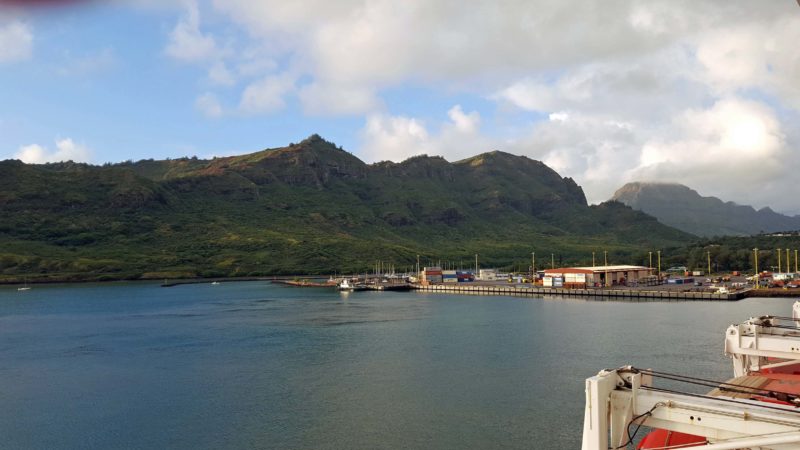
This was our wake-up view this morning. There are similarities in the four islands we’ve visited, but each is a very unique place to visit and explore.
Kaua’i is called the “garden isle.” It is the oldest of the Hawaiian Islands and has soil. The volcanoes on Kaua’i are inactive and the island is now in the erosion stage. It becomes slightly smaller with each rainfall, so in 5-6 million years, it will be no more than an atoll. At least there’s time for Ted and me to come back before that happens. The average annual rainfall at Kaua’i’s mountaintops is 460 inches; at sea level on the western (dry) side of the island, it’s 2 inches.
Hawai’i has 13 of the 15 microclimates, which I found very interesting. It lacks the extreme cold and the extreme hot microclimates. Within almost any 15-minute drive on our tours, we see weather changes–warmer or cooler, rainy or sunny, calm or windy. When it rains, the rain never lasts very long–maybe 5 minutes–but it rains repeatedly, and it never stays sunny very long in the wet areas like the rainforests. It never stays rainy very long either.
Today’s excursion was titled “The Best of Kaua’i” and took us first to Waimea Canyon, “The Grand Canyon of the Pacific,” on the west side of the island. The canyon is at 3,600 feet elevation, so we went through some microclimates to get here from our sea level dock.
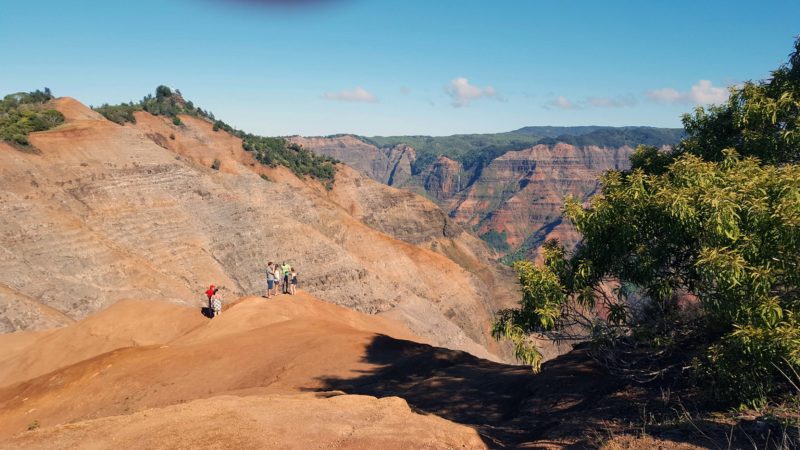
Waimea Canyon is colored by the red and brown exposed volcanic rock mingled with the blue and green tropical vegetation.
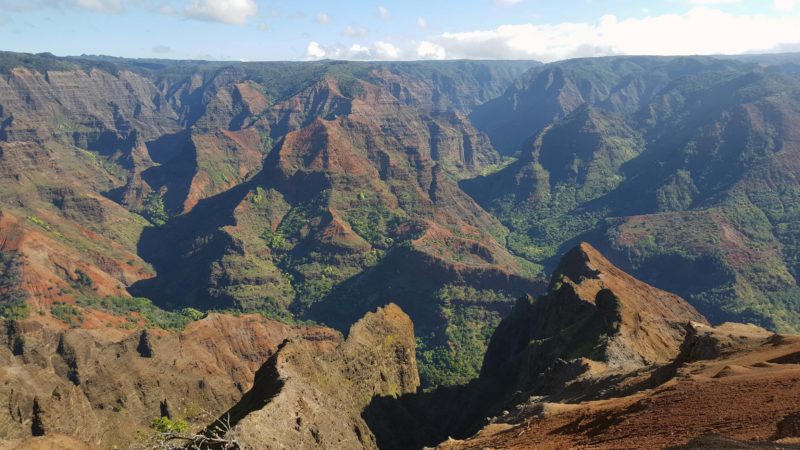
The canyon is 10 miles long, one mile wide, and 3,000 feet deep.
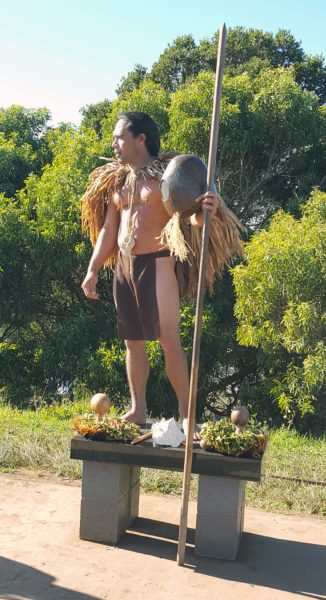
This Hawaiian man at the Waimea Canyon State Park gave us a lot of information about the Hawaiian culture. Hawaiian life is based on the islands’ name: Hawai’i. Ha = breath of life; wai (vi) = fresh water; and i (ee) = creator. These are the three things needed to live simply.
From Waimea Canyon, we drove southward along the western coast and stopped in Koloa for a delicious Hawaiian lunch at a local restaurant. One of the things I enjoy about Hawai’i is the open-air buildings, like this restaurant. There is a roof and there are interior walls, but no exterior walls. The roof is needed to protect people and furnishings from the sun and rain, but the air is so pleasantly warm that it’s nice to have a breeze and unnecessary to have exterior walls–even in the winter.

I don’t have a picture of the restaurant, but this is the check-in desk at our resort. It had no exterior walls or doorways.
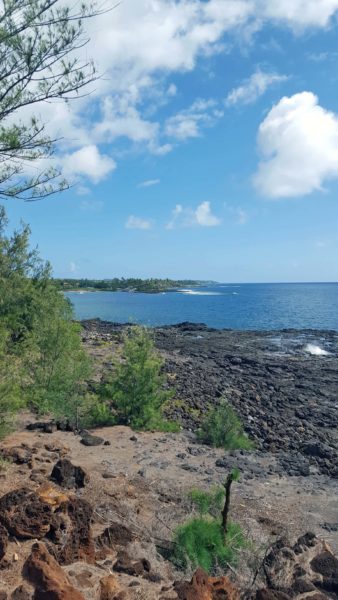
The white patch on the right is ocean spray from Spouting Horn, a small blowhole on our drive along the coast.
After lunch, we headed for the Fern Grotto on the east side of Kaua’i. Along the way, we had a variety of beautiful scenery.
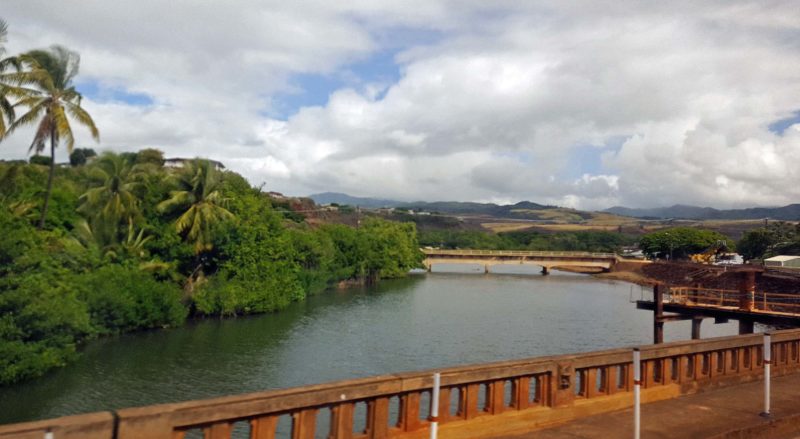
There’s so much water in Hawai’i and it’s all beautiful.
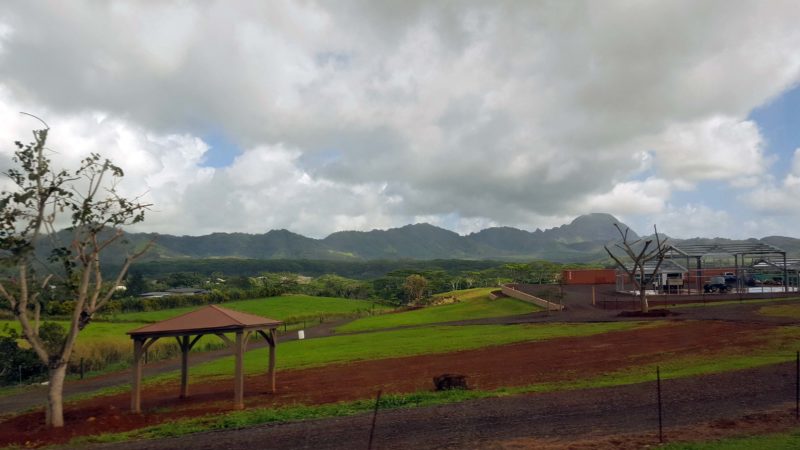
Here you can see ooa (dark clouds, rain) coming over the mountains. They are probably dropping some of the 460 inches of annual rainfall. The red soil is volcanic. The tree on the right that looks dead is actually in its winter stage and will become green in spring. There aren’t many deciduous trees in Hawai’i. In fact, I didn’t see any bare trees except for this type.
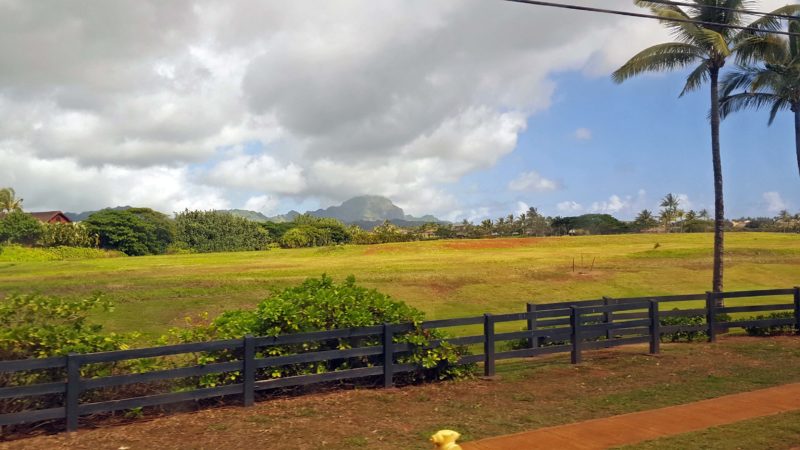
Kaua’i has soil, so crops can grow. In one field, I saw corn with tassels–in January!
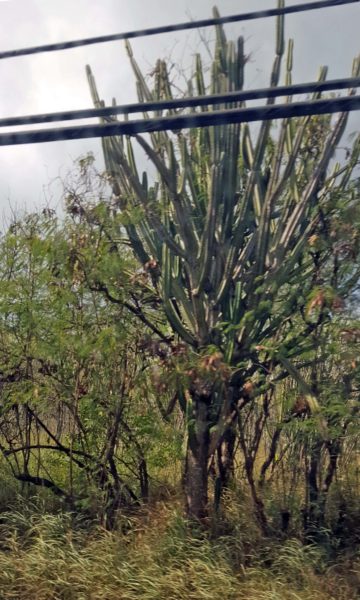
I couldn’t believe it when I saw this saguaro cactus today–on the dry western side of the island, of course. A woman who lived on Kaua’i collected cactus plants and brought the saguaro to the island. She had the largest collection of cactus west of the U.S. mainland. The saguaro is not protected here as it is in the mainland Southwest.
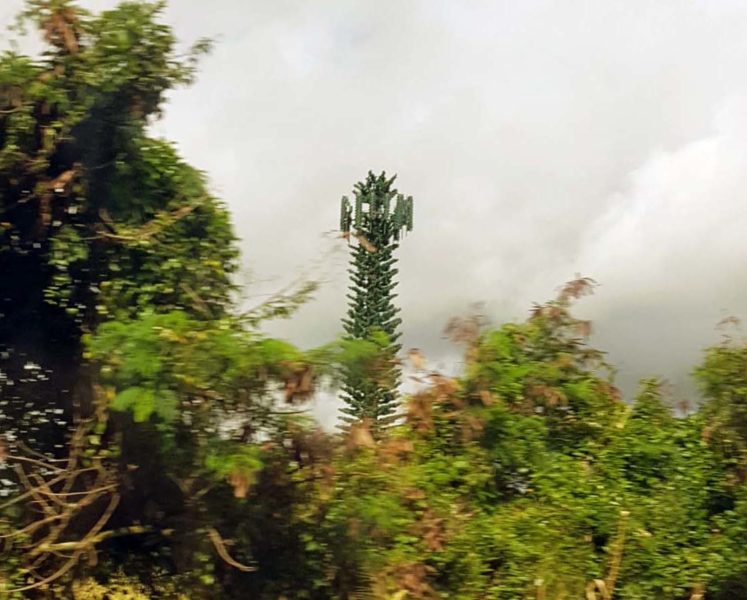
Local residents refer to this as the “Verizon tree.”
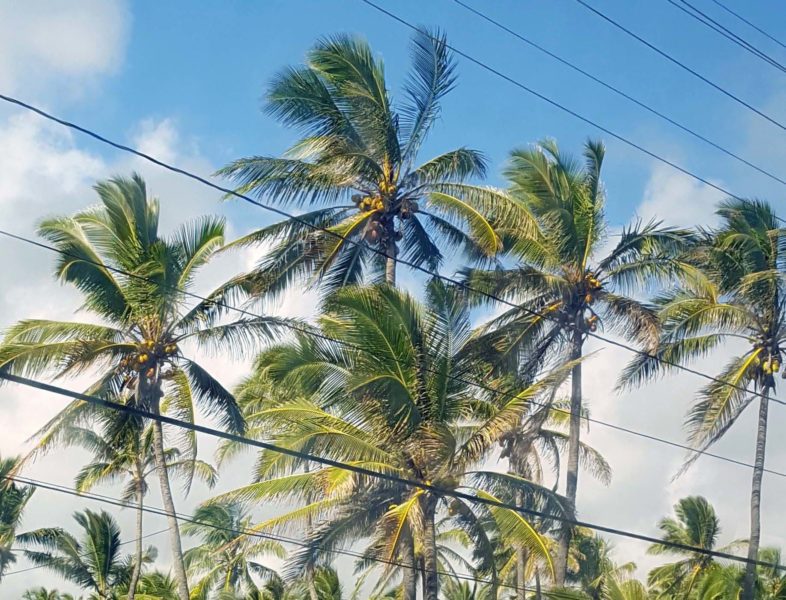
These are obviously coconut palms. (Duh!)
We had some pretty stops along the Wailua River on our way to the Fern Grotto.
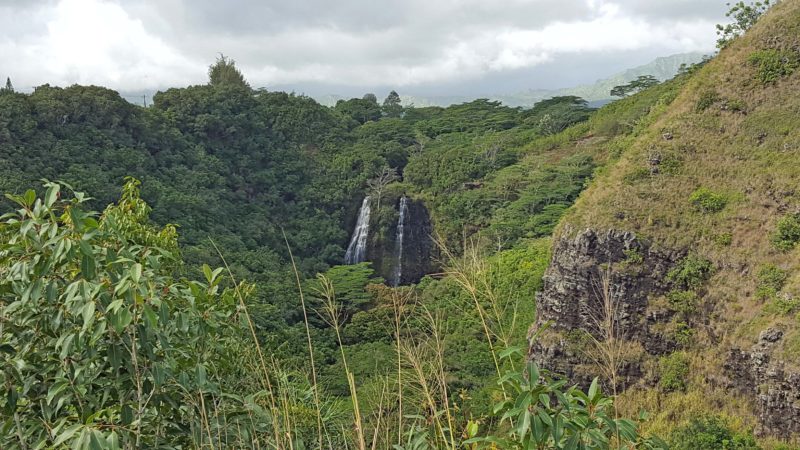
There were waterfalls, of course.
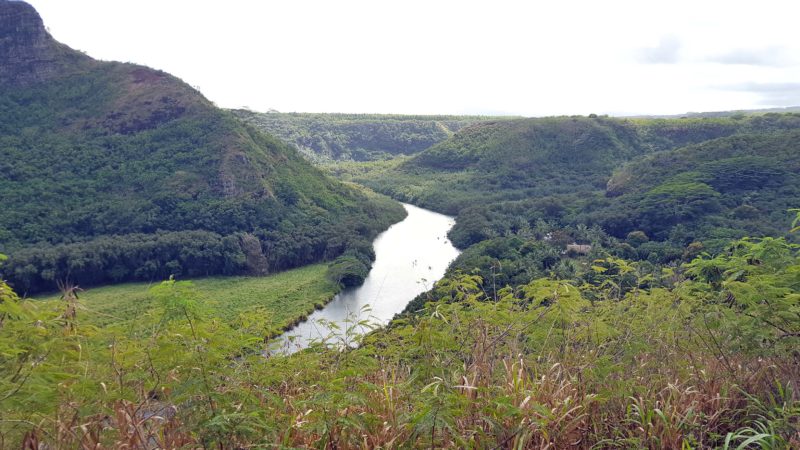
At another stop, we had a pretty view of part of the river valley.
Kaua’i is sometimes referred to as “chicken island” because there are so many wild chickens here. There are chickens on the other islands too, but not as many. The Polynesians brought chickens to the islands for food. The chickens have no natural predators and are protected on state and federal lands. Anywhere else, it’s legal to catch–but not to shoot–chickens to eat. Not many people hunt chickens, however, because going to Safeway is much easier. We stopped on our drive to the Fern Grotto for what our driver called liki-liki (leaky-leaky)–Hawaiian slang for a rest stop.
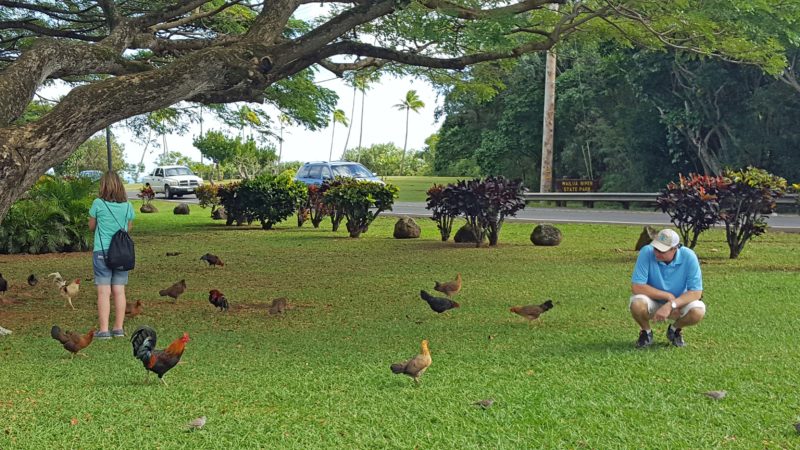
The chickens like to gather in the tourist areas, and there were a lot of them at this liki-liki stop. I didn’t see any all-white chickens on any of the islands; most were red or brown.
When we got closer to the Fern Grotto, we boarded a riverboat and had a nice little cruise, complete with Hawaiian music and dancing. We learned today that ukelele is properly pronounced oo-kah-lay-lay. It was named by Hawaiians who saw someone playing the instrument. The audience was mesmerized by how quickly the musician’s fingers moved over the frets. Trying to find an appropriate Hawaiian name for the instrument, they settled on uke (oo-kah), which means “fleas” and lele (lay-lay) which means jumping. The musician’s fingers moved like jumping fleas.
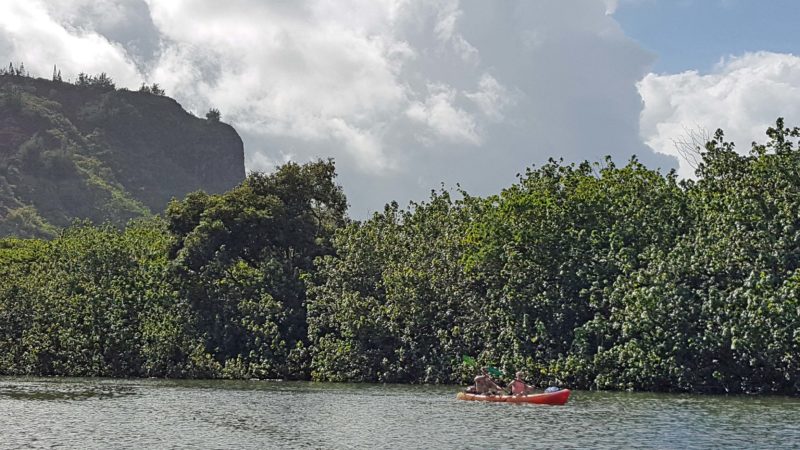
There were a lot of people on the river in kayaks and canoes.
We had a short walk through a rainforest (we’re on the east side of the island now) to the Fern Grotto.
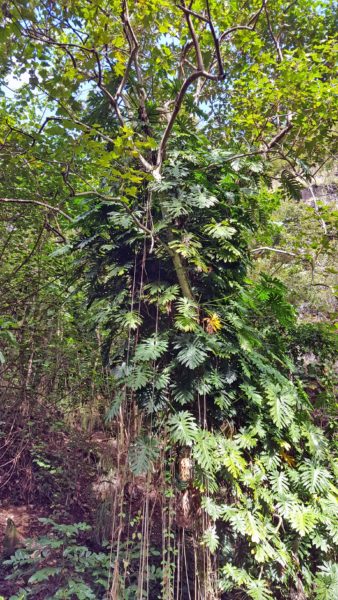
This is a philodendron overgrowing a tree trunk. The leaves are huge, and it’s just one of many vines doing this.
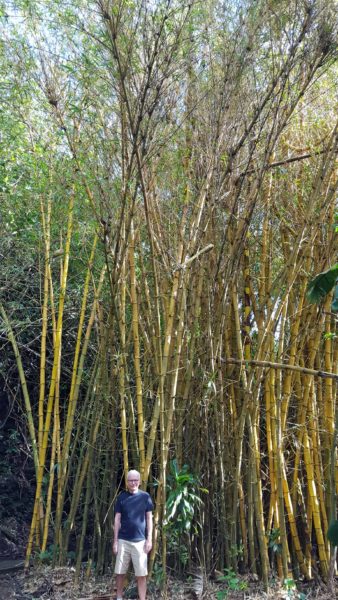
Here’s one of the groves of bamboo in the rainforest . . . and of course, my trusty scale figure–Ted.
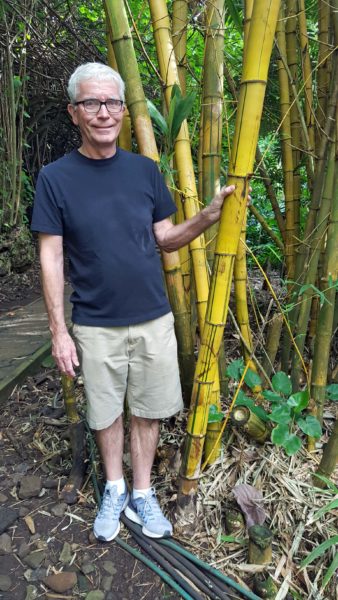
This is big bamboo!
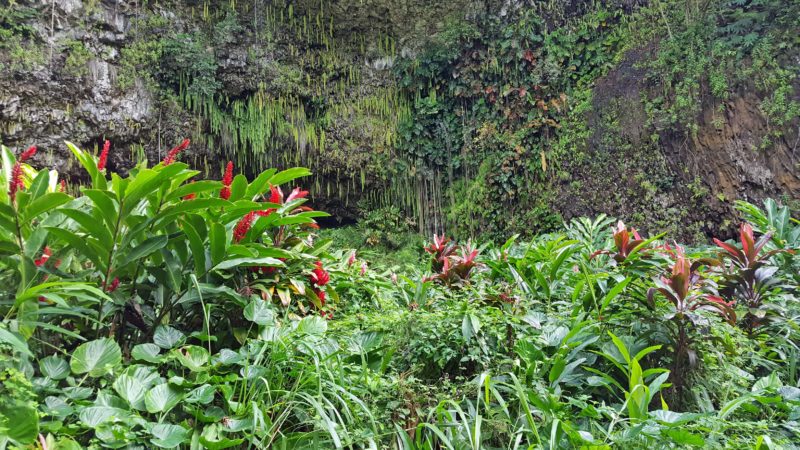
This entire volcanic rock wall is covered with ferns and has water dripping and running over it. It was a beautiful and peaceful place. It used to be sacred ground and is frequently used as a setting for weddings.
Before closing, I have to share something our driver told us. The Hawaiian word for cattle is pipi (pee-pee) and the Hawaiian word for appetizer is pupu (poo-poo). The driver suggested that the next time we go to our butchers, we ask for some pipi-pupu (beef appetizers).
To quote Jeff’s blog about his visit to Hawai’i, it was another day in Paradise.